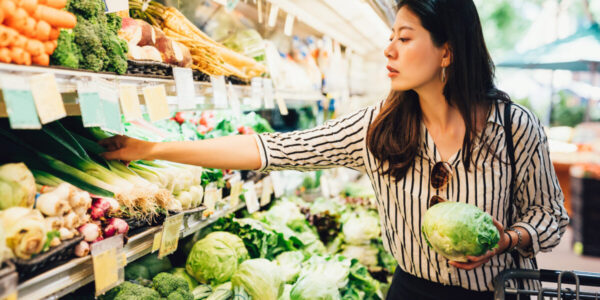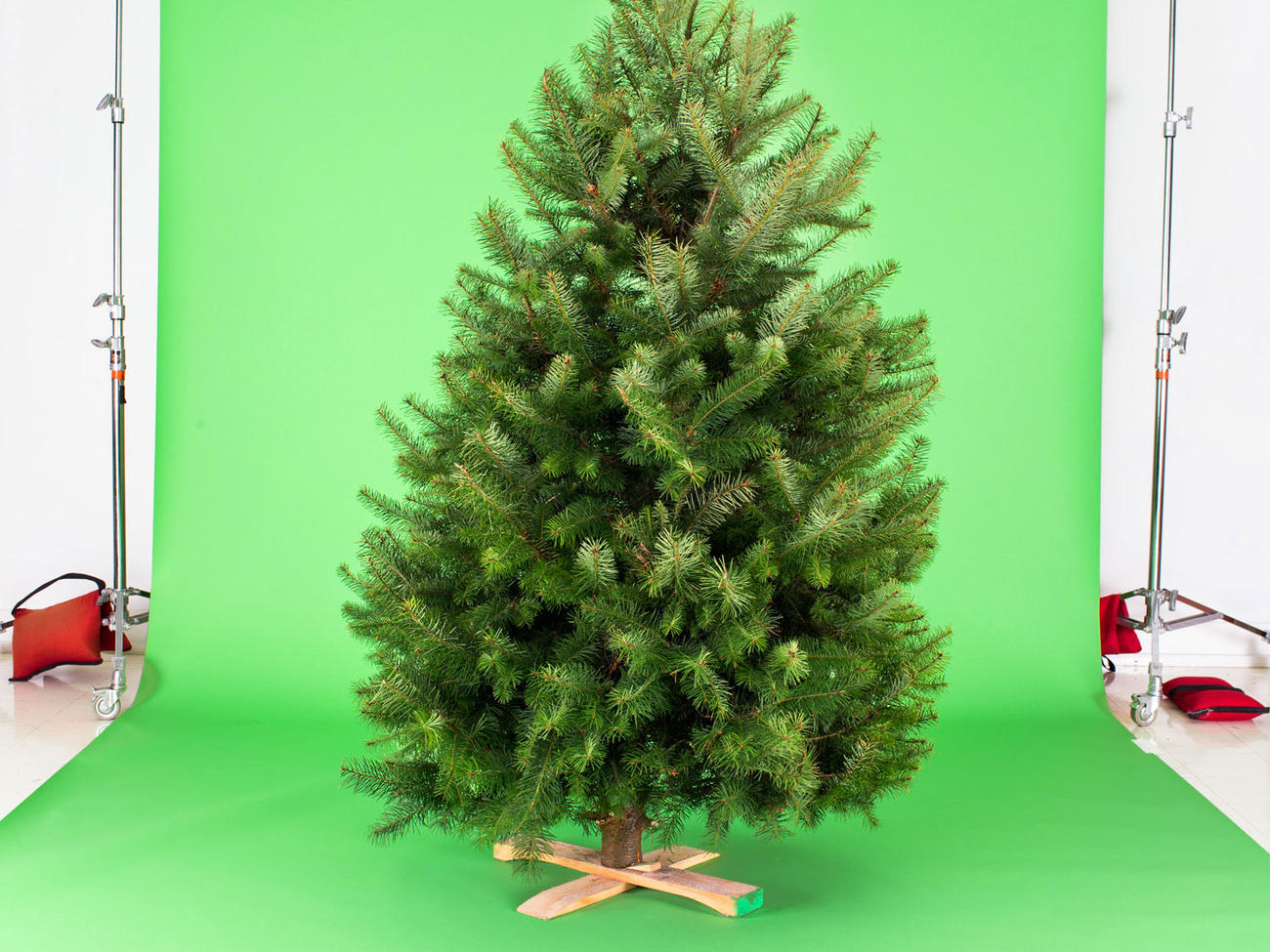
Fresh vs. Fake: Choosing the Right Christmas Tree
Piney-sweet smell, or perfect branches every year? See how the West is changing the way we make that decision

Thomas J. Story
A Noble fir is the most popular choice for a fresh Christmas tree in the West
When I was a child, my family adhered to a strict policy when it came to Christmas trees: We never drew from the same well twice. One year, we rolled up to the White Front parking lot in Everett, Washington, where my dad haggled with the schnapps-warmed proprietor over the price of a 6-foot fir. In a better winter, we tramped into an Alaskan forest, axe in Father’s hand. During our California years, my sister and I pitched in to assemble our wire-and-plastic tree, working it like a big Tinkertoy set.
The ease with which this long-dead lumber is recalled speaks to its power. Holidays come and go, but Christmas trees stand in memory’s warehouse forever. Now, with two kids of our own, my family is all about the adventure of finding the perfect real tree. We’ve cut our own at a farm and carted it by boat and ferry from the San Juan Islands to our home in Seattle.
A few years ago, we lived for a year in a mountaintop house in Colorado. The owners encouraged us to cut a blue spruce from the backyard, so we found a 12-foot whopper. It took us all afternoon to cut it, haul it, and brace it in a stand. We dressed it in lights and sat and gazed at it, a drinking, breathing, living piece of forest standing there as if it had walked its rootsy feet through the back door and taken up a cozy spot next to the couch. “That’s a pretty good tree,” said our son, Willie. And we all agreed.
- What he grows: 80 acres of Noble fir, “the Cadillac of Christmas trees,” says Norby. Nobles grow like weeds in Oregon’s rich soil, temperate climate, and generous rainfall—from 12-inch sapling to 7-foot beauty in 6 to 8 years.
- Why: Too often, people buy artificial trees thinking they’re saving a forest, says Norby. “Most people don’t realize that Christmas trees don’t come from pristine forest—we grow them as a sustainable crop.”
- How he spends Black Friday: Before dawn, Norby oils the chain saws and readies for sunup harvest with his 12-man crew. They hand-haul each tree to the bailing station. (The trees can’t be dragged, or mud will sully the needles.) His entire harvest happens in a three-week frenzy. “He loses about 15 pounds every November from the work and sweat,” says Norby’s wife, Terri Barnes.
- His customers: Real-tree buyers in California, Oregon, and Utah who favor green practices. Among other things, Norby uses ladybugs instead of pesticides to control aphids, and runs his trucks on biodiesel.
- The future of real trees: Oregon harvests about 7 million Christmas trees per year, more than double the nation’s number-two producer (North Carolina). While the Oregon tree market has been robust, those of Washington (about 785,000 trees), California (about 119,000 trees), and other states have flagged. Estimates from real-tree and fake-tree associations indicate that, today, one artificial tree is purchased for every 2.4 real trees—but presumably every fake tree sold takes a potential real-tree buyer out of the market for a number of years.
- Price tag: A 7-foot tree ranges from $25 to $150.
- Longevity: A cut Christmas tree stays fresh for 2 to 3 weeks. After that, it can become so dry that it turns into a fire hazard.
- Convenience: Freshly cut trees can be found in seasonal tree lots and big-box stores. Some families prefer the ritual of going to a tree farm to select and cut a tree on the spot. Some tree sellers will wrap the tree in netting for you to protect it in transit; if they don’t, bundle it in an old sheet and tie securely, trunk end forward, to the top of your car with a sturdy rope.
- Care and feeding: A trunk seals itself within a few hours of cutting, so before you bring your tree inside, use a hacksaw to cut 2 inches off the base. Trees drink a lot. Check the water level and replenish as needed every day. Avoid placing the tree next to a heater vent or fireplace where it can easily dry out.
- Eco factor: Real trees sequester carbon dioxide and produce oxygen. After they’re cut, about 93 percent of Christmas trees are recycled, becoming wood chips for use in parks, or sunk whole in waterways for fish habitats (earth911.com for programs). Even more sustainable: a living, potted Christmas tree. A few companies in the West, such as Living Christmas in Southern California, rent potted trees for the season.
- BOTTOM LINE: Go with the real deal if the ritual and environment are your top priorities.
- Tips of branches should be green, not brown.
- Be sure to pick a tree that’s lush, fragrant, and full of color.
- To gauge freshness, pick a few needles and bend in half. Fresh fir needles should snap cleanly. For pines, it’s the opposite: Fresh needles should bend without snapping.
- What he makes: High-end artificial trees using a combination of polyvinyl chloride (PVC) and polyethylene (PE), a softer plastic used in grocery bags.
- Why: About 10 years ago, artificial trees “looked like shredded paper on a stick,” says Harman, then an industrial wire manufacturer. So he made molds out of actual Norway spruce branches, formed his tree using multiple plastics, and hand-painted each branch for a more realistic look. In 2006, the first Balsam Hill model sold for $799, was a quantum leap forward in realism, and helped lead an artificial tree boom. Today, Balsam Hill still uses real-tree cast molds and multiple color shading, and has some models that sell for less than $500.
- How he spends Black Friday: At the office, manning the phone. “Thanksgiving weekend is kind of like our Super Bowl,” he says. “We spend our entire year getting ready, then hire about 100 extra employees to help with the orders.”
- His customers: Primarily baby-boomer women who host large family gatherings. “Having a perfect tree up in late November takes a little pressure off someone who loves to be the perfect host,” says Harman.
- The future of artificial trees: Given the cost of its trees, Balsam Hill isn’t a market leader, but it is a trendsetter. Recently the company has developed new varieties to solve interior conundrums, like the Sonoma Slim Pencil Tree, a 9-foot tree with a 28-inch waist, or the Fifth Avenue Flatback, a vertically bisected tree that, when set against the wall, gives the illusion of a full tree in half the space.
- Price tag: 7 1/2-foot artificial trees range anywhere from $99 to $1,000+, depending on quality.
- Longevity: Companies often give a 2- to 3-year warranty. Higher-end trees may have a warranty as long as 10 years. On average, artificial trees wear out after about 6 years.
- Convenience: Many artificial trees are available online and are delivered to your door within as little as 2 to 3 business days. Big-box stores carry them, too, in a variety of tree species, shapes, colors, and even pre-lit versions.
- Care and storage: Directions for assembly vary in difficulty and type. Some have branches that need to be inserted into the trunk; others have hinged limbs already attached to the trunk. There are no fallen needles to clean, the structure is flame-retardant, and you never have to water it. For many, the biggest issue is finding storage space.
- Eco factor: The cardboard box can be recycled easily; PVC plastic cannot. Because of the way these trees are constructed, they almost always end up in the landfill. In terms of climate-change impact, researchers have found that you’d have to use your artificial tree for at least 20 years before it becomes a better option than a real tree.
- BOTTOM LINE: If you prize convenience and no-mess holidays, it’s hard to beat an artificial tree.
- On high-end models like this one, the needles have texture. Roll them between your fingers and you’ll feel ridges.
- Simpler underbranches help fill out the tree.
- Another high-end touch: Needles mimic natural gradations in color, painted dark green and then fading to a lighter shade.
